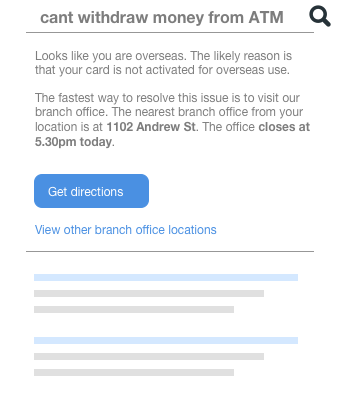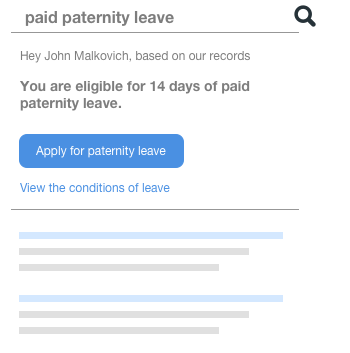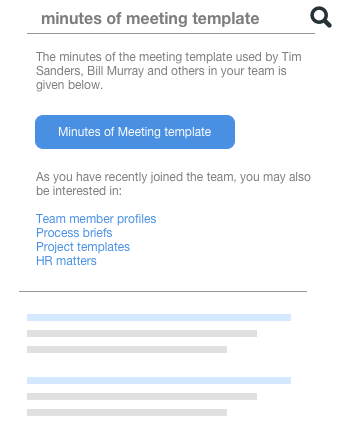5. Context
The 1981 edition of the Guinness Book of World Records carried an entry of the “shortest literary correspondence on record”:
The shortest literary correspondence on record was that between Victor Marie Hugo (l802-85) and his publisher, Hurst and Blackett, in l862. The author was on holiday and anxious to know how his new novel Les Misérables was selling. He wrote “?”. The reply was ‘!’.
There is doubt as to whether the story is true, but if it ever did happen, it is an excellent example of context at play. Only those two people knew what was going on. In this case, context is all of the unsaid that influenced all of the said.
Context is the information one uses to understand a situation. When context is missing or wrong, we say that the understanding is “out of context.” But when it is present, everything speeds up, becomes simpler, and even enjoyable, like the claimed correspondence between Victor Hugo and his publisher.
Bringing context to search, we can say that context offers the situational signals we can use to design rich search experiences.
Let’s consider three search scenarios:
- A bank customer having problems withdrawing money when overseas
- An employee enquiring about paid paternity leave
- A new employee looking for minutes of meeting template
A bank customer having problems withdrawing money when overseas
The situation: A bank customer travels overseas on a business trip. He goes to an ATM but can’t seem to withdraw cash. He goes to the bank’s website and enters “can't withdraw money from ATM” into the search box.
The challenge: How might we lower the customer’s anxiety and help resolve the matter quickly?
Available contextual signals: We know that the customer is overseas (location). Also, because the customer uses a mobile device, we can gather the time of the day (time) and his GPS coordinates (location).
For starters, if we have a page about problems withdrawing money from overseas ATMs, we should boost the relevancy factor of this page against the query. Next, if we have a list of bank branches, we can offer customers a way to resolve the issue by visiting the nearest branch. We can use the ‘time’ information first to check whether the branch office is open.
 Results of the query “can't withdraw money from ATM”.
Results of the query “can't withdraw money from ATM”.
An employee enquiring about paid paternity leave
The situation: It is a happy time for this employee. His wife is due to deliver in a few months, and he wants to plan his paternity leave. He types in “paid paternity leave” into the search box.
The challenge: How might we help this employee quickly understand and apply for paternity leave (he already has a lot on his mind)?
Available contextual signals: We know the person's ID as he is logged into the intranet. We also know his rank and his entitlements. The beauty of search in the enterprise is that you can leverage a lot of such data. You can access HR, financial, sales, and marketing systems and bring all of this data to bear to improve search relevancy. For the query on paternity leave, you can directly access the eligibility and entitlements to offer a simple answer like the one shown below.
 Results to the query “paid paternity leave”.
Results to the query “paid paternity leave”.
A new employee looking for minutes of meeting template
The situation: A new employee has joined the project team. Eager to be valuable and helpful, she wants to attend a few meetings and offers to take notes. She types the ‘minutes of meeting template’ into the search box.
The challenge: How might we help this employee learn the ropes faster without overwhelming her with a chaotic information environment?
Available contextual signals: Similar to the paternity leave scenario, we know something about this employee. We know that she is new. We also know she belongs to a particular project team. We can bring this and other details to bear on the search results and offer more relevant information, as shown below.
 Results to the query “minutes of meeting template”.
Results to the query “minutes of meeting template”.
Contextual signals
So, we've established that contextual signals are useful for search. But how many types are there, and how do we think about them?
Cennydd Bowles, a digital product designer who previously worked with Twitter, offers a list of contextual signals he calls DETAILS:
- Device: Using the native contextual signals that the device offers (e.g., it can take pictures)
- Environment: Using the signals in the environment (e.g., quiet or noisy)
- Time: Using temporal signals (e.g., time of a meeting)
- Activity: Using signals from a task (e.g., when creating a policy report)
- Individual: Using personal signals (e.g., the type of work)
- Location: Using signals of space and time (e.g., office locations)Social: Using social signals (e.g., popular items)
These seven types of contextual signals cover most cases and can be used when designing search experiences.
General relevancy, personalisation and recommendations
The three scenarios we covered earlier are three different ways to use contextual information:
| Scenario | Type of use |
|---|---|
| A bank customer having problems withdrawing money when overseas. | Improve general relevancy |
| An employee enquiring about paid paternity leave. | Offer personalised results |
| A new employee looking for minutes of meeting template. | Recommend relevant information |
Improve general relevancy
You can use contextual signals to boost specific relevancy parameters. The common signals are device, time and location. Improving general relevancy is easy to include and implement.
Offer personalised results
You can use the properties of the searcher to offer targeted search results (individual and social signals). Getting personalised results means tapping into personal data, usually locked away in dedicated systems. Thus, you may be looking at some level of system integration to get personalisation going.
Recommend relevant information
Recommendations go far beyond the simple type shown in the scenario. They can scale to the ones offered by Amazon, Netflix and Pandora. The recommender systems powering such sites use all sorts of contextual signals, their weights, and sophisticated mathematics to provide relevant recommendations. But the good news is that not all situations call for such powerhouse treatment. We can start with simple but useful recommendations.
Context dramatically improves the search experience. It raises productivity and is enjoyable to consume when done right. With so much going for it, why haven’t organisations included context in their designs? The answer, which applies to much of enterprise search, is that organisations assume that context is automatic and all they have to do is to buy the right 'search tech'. As we have seen in this chapter, that is not the case - you need to design for context.